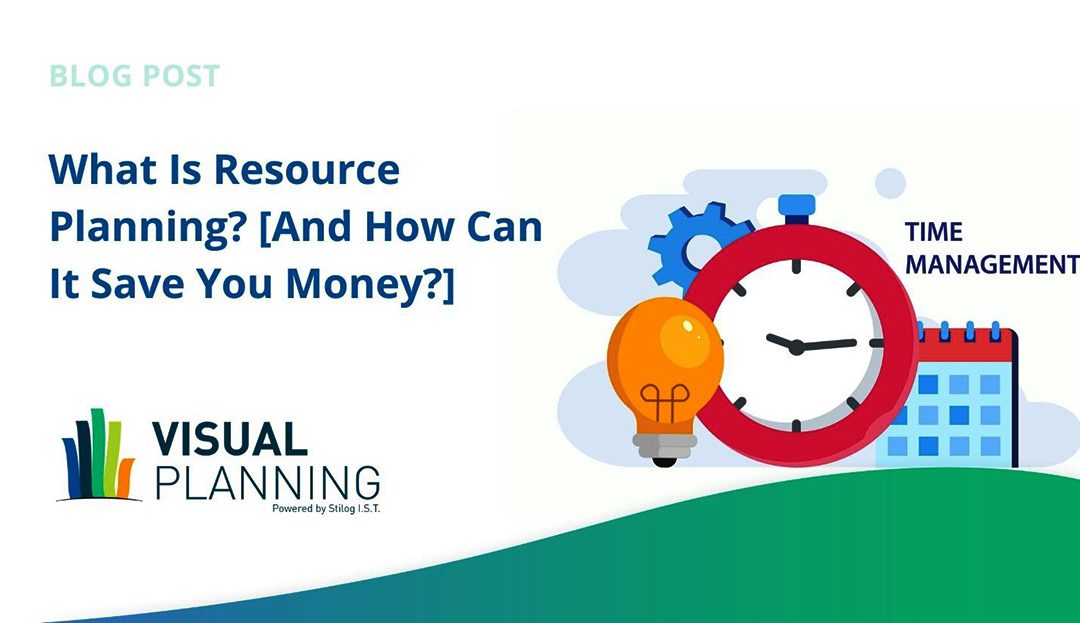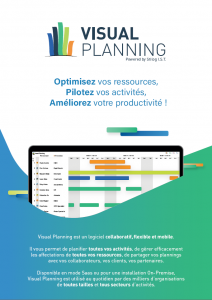On average, executives spend more than 20 hours a week in meetings. This is a common example of poor resource use: An organization’s top leadership spends more time a week talking than they do acting.
But resource planning goes much deeper than the C-suite of a business. In fact, good resource planning can involve employees, materials, data, technology and even processes. Find out more about resource planning below, including how it can save your business money.
What Is Resource Planning?
Resource planning is, broadly speaking, exactly what it sounds like — it’s the process by which you make a plan for what you’re going to do with your resources. Specifically, it involves allocating certain resources to specific tasks for highest levels of efficiency, cost savings and other positive metrics.
Here’s a fairly simple example of resource planning:
- An HVAC company has technicians of various levels: entry-level assistants, journeymen and fully certified techs.
- The company provides both commercial and residential units.
- A residential customer calls. They need a new HVAC unit installed. This is typically a two-man job for the business.
In the above scenario, would the business send a commercial unit out to be installed? No — that’s poor use of resources. First, it’s overkill for the job. The commercial unit costs more than the company may be able to charge residential customers. Second, the commercial unit may not even fit — physically or otherwise.
Which employees might the company send?
The job requires two people, but sending two fully certified techs may be a poor use of resources. Sending two entry-level techs or two journeymen is likely an under use of resources. The right option might be to send a fully certified technician to run the job and an entry-level assistant to help.
An HVAC company can’t just worry about resource planning for the one job, though. It must have solutions in place that let it plan for future jobs so staff are scheduled appropriately and the right equipment is where it ought to be.
Another common example of resource planning is inventory management, for example. A retail store or manufacturer must have the supplies on hand to meet consumer or process demand. However, you don’t want too much of something on hand, as that wastes space and money.
Ultimately, good resource planning ensures that the right people, things, information and skills are present at the right time.
How Can Resource Planning Save You Money?
Resource planning saves you money in a number of ways, including:
- Supporting JIT management. Just in Time is a Lean manufacturing principle that works in a variety of industries. It means that you have what you need in time to do the job but not much sooner. If you’re stocking parts for every possible job you might run into, you could be spending a lot of money you don’t need to. Resource planning lets you base JIT inventory on historical data in order to avoid waste.
- Reducing over resourcing. When you plan right, you’re not giving someone a steak burger if they ordered a basic cheeseburger or sending the most experienced tech out to do something simple like replace a hose. Over-resourcing typically isn’t something you can charge the client for, which means the business eats that cost.
- Mitigating under resourcing. At the same time, you’re not underserving the customer either. Resource planning lets you manage processes to ensure people are getting what they paid for. This reduces customer attrition and negative word of mouth, lowering the cost of keeping loyal customers as well as obtaining new ones.
- Enhancing growth potential. When you can effectively manage the resources you already have, you often find opportunities for growth. Good resource management lets you do more with less, which means you can take on added jobs without paying for more resources.
Other Benefits of Resource Planning
The benefits of resource planning almost always find their way back to the bottom line, but you’ll see them outside of your balance sheet too. Here are a few common benefits of resource planning aside from cost savings:
- Improved customer satisfaction. When you’re deploying the right resources at the right time, you’re going to have a greater chance at making the client happy. On top of saving you money, this benefit helps you make more money by increasing sales.
- Better employee morale. When people have the resources to do their jobs, they’re more successful. That leads to higher employee morale. Not to mention the fact that when you employ good resource management, you’re less likely to align employees with tasks they simply aren’t skilled at or ready for.
- Reduced error rates. All of this also adds up to reduced error rates. Think about when you bake a cake at home. If you have all the ingredients you need on the counter already and aren’t trying to substitute because you forgot butter, your cake has a better chance at coming out gorgeous and delicious. The same is true if you’re baking something you have experience with versus trying a brand new and complex recipe that might be above your current skill set. These principles apply in the workplace too — employees who know what they’re doing and have the right tools and materials make fewer mistakes.
3 Tips for Resource Planning
So, how do you get all these benefits of resource planning? Start by following these tips.
1. Understand Your Resources and What They Offer
Start by understanding what resources you have and how each might be best used. One way to do this is by brainstorming and then creating categorical matrices.
Brainstorm all the various types of resources you have. That could include employees, raw goods, tools, software programs and data.
Choose one category and make a list of all the resources in that category. Decide on all the business-specific needs you have that should come from this category and make a matrix, checking off whether or not each person or item in the category meets those needs.
For example, an employee matrix might look like this:
| Employee | Certified Tech? | Forklift operator? | Customer service experience? | Supervisory experience? |
| Sue | x | x | ||
| Todd | x | x | x | |
| Elias | x | x |
These types of matrices let you see at a glance whether a resource is a good fit for certain tasks or assignments. It’s a good way to make sure you’re bringing a hammer to do a screwdriver’s job, so to speak.
2. Create a Plan for Resource Use
Once you’ve gained a good sense for the resources you have, you can plan for how best to use them. In the above example, it’s obvious that Elias can’t be sent to do a job that requires certification, and if there’s a forklift in the mix, Todd will need to be on site. But you could also see that Sue or Elias might have the experience to deal with customer issues, which means you may set a rule that one or both are included when dealing with a potentially difficult client.
You can use this same line of reasoning and planning when dealing with equipment, digital resources, tools and raw goods too.
3. Use Resource Planning Software to Schedule and Manage Resources
Reviewing a matrix and trying to sort out resources for each task can quickly become cumbersome if you’re doing everything manually. Instead, consider entering this data and your custom rulesets into software that can automatically schedule and manage resources for you.
Contact Visual Planning today to find out about options such as production scheduling software or employee scheduling software that can help you tackle this job more effectively.
Manale is a passionate about digital marketing. She joined STILOG I.S.T in 2018.
She brings SEO & SEA expertise, email marketing and creative content marketing to create a great brand experience for Visual Planning customers.



